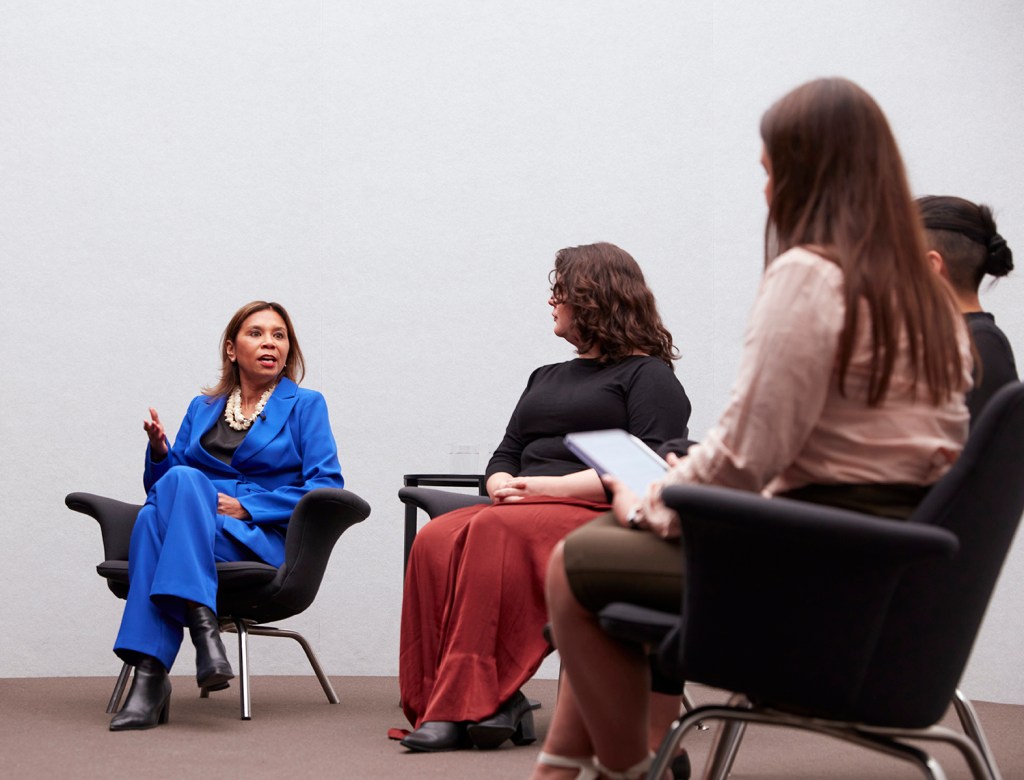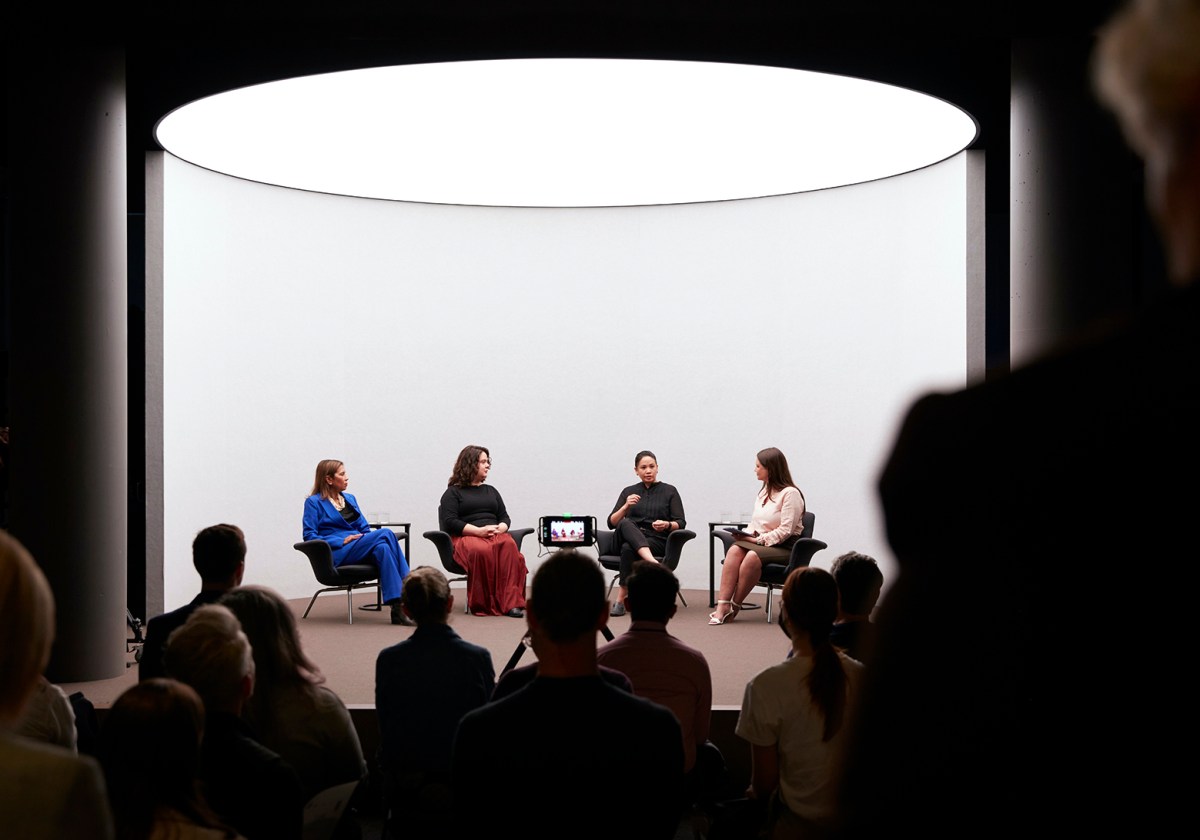Powerhouse has launched its inaugural Climate Action Plan 2022 – 2025, with an ambitious target of achieving net zero operational carbon emissions by 2025.
This commitment places Powerhouse in a global leadership position (other local comparators like Sydney Opera House and the Australian Museum have committed to net zero by 2030).
In a twist, the launch this week (17 November) was marked with a panel discussion in the Powerhouse Ultimo’s Boiler Room, appropriately to coincide with the final day of COP27.
‘Before it was home to the museum, this was the ultimate power station,’ said journalist Rae Johnston, moderating a panel discussion for the launch. ‘It was built in 1899 and it supplied coal-powered electricity to Sydney’s tram system into the 1960s.’
Part of the climate action plan is to turn that fossil fuel heavy site at Ultimo over to 100% renewable energy. Chief Executive of Powerhouse Lisa Havilah said: ‘Sustainability is integral to the Powerhouse’s landmark $1.5 billion renewal – [it] is more than a requirement for Powerhouse, it is our story and responsibility.’
As Powerhouse’s Climate Action and Sustainability Manager, Carmel Reyes has been integral to the team developing the plan. ‘We’re in the business of building new museums at the moment,’ she said. ‘So we have a section in our action plan that is specifically responding to infrastructure, [which examines] how can we take advantage of this huge capital works program and ensure that we can embed all of those efficiencies.’
Apart from a once-in-a-generation opportunity with building works across the museum’s sites, where this plan differs from others, is that it takes as its foundation the museum’s Caring for Country principles document.
This was developed in consultation with First Nations peoples of the Country on which Powerhouse sites are located, and in consultation with First Nations collaborator Dr Terri Janke, and Powerhouse’s First Nations Directorate.
Janke said of those principles: ‘It’s pretty novel to have them, but it’s really something that we want to see all institutions having. And I think the Powerhouse is leading there.’
Janke was co-author of the Federal ‘State of the Environment’ report in 2021, and is a leading voice in the intersection of First Nations dialogue, museum practices and climate action.
Janke continued: ‘We’ve got to think how these principles can really be embedded in the practice of the Powerhouse and its sustainability action plan. Its goals around climate change action are one thing, but it also, I feel, links to the work that Emily is doing… [in] integrating Indigenous First Nations’ perspectives into the way that the Powerhouse works.’
Emily McDaniel, Powerhouse’s First Nations Director, joined Janke and Reyes in the panel discussion. ‘For us at the Powerhouse, an acknowledgment of Country is more than just words that we use to commence a meeting, or a gathering,’ said McDaniel. ‘It’s actually a responsibility when you’re saying it – you are taking on a responsibility.’
She continued that the renewal project is not only about rethinking infrastructure with an efficiency lens, but is also about understanding the role of care as those buildings sit on Country, and collect culture from Country.
JUMP TO:
What’s in Powerhouse’s Climate Action Plan
How Country is the foundation of this Climate Action Plan

Timing is everything
A number of organisations today are prefacing this kind of policy position across their institutions, placed upfront as a cross-institution commitment. It is about saying ‘hey, this is as important to us as our program, our audience and our supporters’.
‘There is actually no sense in waiting,’ said Reyes. ‘If we were to say, “oh, we’ll think about net zero in 2040”, we would have lost the opportunity to embed it… so we’re throwing everything at it.’
In a media release about the launch of Powerhouse’s Climate Action Plan, NSW Minister for the Arts Ben Franklin said, ‘As Australia’s leading museum of innovation in applied arts and sciences, Powerhouse is uniquely placed to raise awareness and showcase the role technology, engineering, science and design can play in addressing climate change and sustainability challenges.’
Powerhouse’s Climate Action Plan 2022 – 2025 sets out 12 key objectives encompassing infrastructure, programs and operations across the museum’s four sites.
Credential checklist, in brief:
- Powerhouse Parramatta is being constructed to the highest 6 Star Green Star Standard. It will feature net zero operations from the day it opens in 2025.
- Net zero operations will be embedded into the design principles for the Powerhouse Ultimo renewal (the Design Competition is currently underway).
- Powerhouse Castle Hill will reduce carbon emissions by maximising solar supply on-site and transitioning away from fossil fuel use by 2025.
- A Conservation Management Plan is being prepared for Sydney Observatory that includes a biodiversity assessment to enhance the site, prioritising indigenous plants and sustainable landscaping practices.
What’s in the plan
Stepping through the plan, its key points are signals for change that any arts organisation can consider following. The plan states:
- There will be a commitment to reduce total energy consumption by 20% from the FY 2018/19 baseline, achieve 90% resource recovery from production and operational waste by 2025, and achieve zero increase in potable water use by 2025 from the FY 2018/19 baseline.
- Steps will be taken to achieve net zero operations, including maximising on-site renewable energy opportunities, eliminating fossil fuel use, enhancing biodiversity values, integrating water harvesting and reuse in property operations at all sites, and standardising a zero-waste approach to exhibition construction and operational waste management.
- Powerhouse will also integrate sustainability into programming and practice by embedding sustainability in collection management practices, prioritising collaboration and research with climate change thought leaders and industry to showcase innovation and ideas, and reducing carbon emission impacts associated with exhibition design and program development.
- A dedicated curatorial role will be created that focuses on climate change science and sustainability.
Reyes said that Powerhouse has ‘decided – and it’s a very bold decision – not to introduce gas use at all [at Powerhouse Parramatta], and not to introduce fossil fuels into the way that we operate the building, which is a departure from what we see here at Ultimo, where our well-known Steam exhibition runs on gas boilers.
‘Ultimo is going to undergo its own significant renewal and refurbishment, and the challenge to our industry partners, whoever takes that on, will be to cut fossil fuels and start from scratch with 100% renewables,’ she continued. ‘All of our new builds will also incorporate renewable energy generated on-site.’
Read: The new climate in climate arts activism
How Country impacts a climate action plan
On top of emissions targets, the action plan looks at the ‘care of objects in a way that’s not super energy intensive,’ added Reyes. It will entail working across the collection management team and curatorial teams to bring sustainability principles into the way that the museums work, ‘to have our programs thought of in a different way, developed in a different way [and] to ensure that those principles are always at the heart of them,’ she said.
‘The Climate Action Plan, as you see it, may not be the same sort of sustainability plan or climate action plan we may have written five years ago, or in five years’ time,’ said Reyes. ‘It really is looking across the organisation to what is at hand now, and ensuring that we have taken responsibility in our responses to that, by starting with the foundation of the Caring for Country principles.
‘When taking those principles and putting them into urban landscapes and even into the development of the Climate Action Plan, we were primarily thinking about decarbonisation and the opportunity that presents in the new build. But when it came down to it, our number one objective was to ensure that we practise responsible stewardship. And that came out of those consultations and it came out of all our work together,’ Reyes said.
‘I think often there is the perception that going back to caring for Country is just sort of forgetting about the city, which is absolutely not the case. And we’re not able to do that at the Powerhouse, but it does present so many opportunities.’
Reyes concluded of the new direction, ‘It’s going to be a different kind of museum.’
To peruse Powerhouse Climate Action Plan.





